5 Fantastic First Project Cars
When it comes to a project car, it’s best to dive into one that truly lights a flame inside you. A project car is almost always mentally, physically, and financially draining at some point in your relationship with it. If you don’t care to stick it out through such hurdles, frustration might block you from ever returning to the project again.
So, where to begin? The list of needy cars for sale from the world’s garages, carports, driveways, and open fields can seem overwhelming. It can be easy to dream big. Of course, hell-on-wheels traps exist; certain cars are difficult to source parts for, offer minimal community and owner support, or are just plain prone to breaking.
Some cars, on the flip side, offer a stronger foundation for novices. Today we’ll be donning the role of Car Matchmaker. Whether you’re new to the hobby or a veteran, smoother-sailing and joy-to-own DIY classics are out there— here are five vehicles we think might be right for you:
Little British Cars
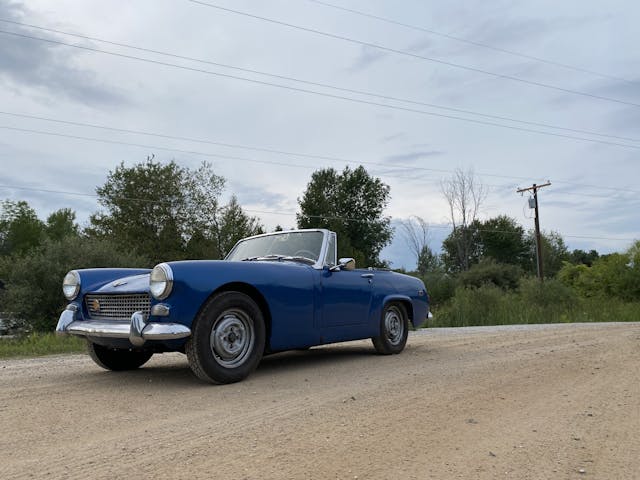
A cheap British sports car can offer plenty of, uh, opportunities to bond with the mechanically inclined owner. The nice thing is that there were tens of millions of Austin-Healeys, Triumphs, and MGs produced during the 1960s and ’70s that share much in terms of maintenance parts and techniques. The cars are relatively affordable, and thus, so are the parts. The biggest boon: support and knowledge provided by other enthusiasts. British car clubs are often large and helpful—perfect for a newbie to the genre.
Volkswagen Beetle
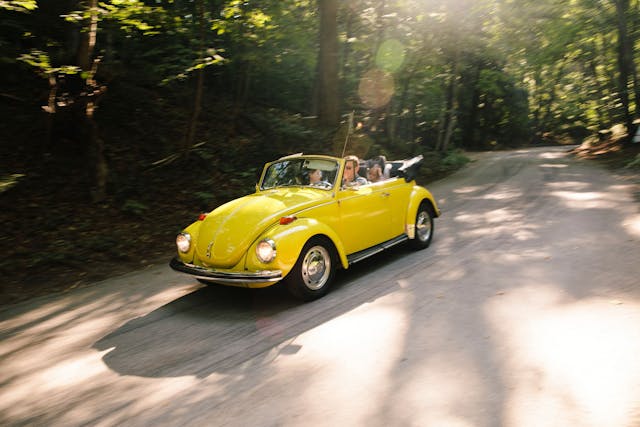
The Beetle dethroned the Model T for the outright model sales record, eventually going on to account for over 21 million sales. There is safety in numbers, which often correlates with good parts support and pricing. The aftermarket support for Bugs is downright impressive, even compared with other mainstream vintage cars like Mustangs or Chevelles. Beetle owners will get familiar with regular maintenance like oil changes and valve adjustments, but the fundamental build and design are sturdy; if you do the job right the first time, you likely won’t have to do it again unexpectedly.
Ford Model A or T

You want to learn the basics? Then buy one of the most basic cars you can drive. Just stare at a Model T for more than a few minutes, and you’ll notice that none of the critical parts are hiding. Everything is pretty out in the open. Best of all, components were overbuilt by a factor or two in most areas. Model Ts—and As, for that matter—don’t require many power tools, which means they’re accessible and enjoyable to work on whether you’re a tool rookie or an experienced wrench. Fun to learn on and fun to drive? That’s a good project car.
Trucks of the 1970s and ’80
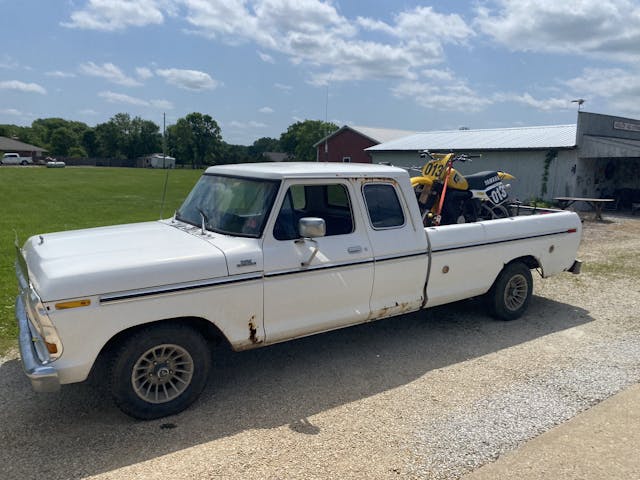
As simple as the aforementioned Fords are, their age comes with real-world usage limitations. If a utility is an aspect you value in a finished project car, vintage pickups from the 1970s and ’80s are a great place to look. These are rugged, tough hunks of metal that enjoy fairly high tolerance for deferred maintenance. If you are willing to buck up and take on the challenge of catching up on all the stuff the last owner neglected, the juice can be worth the squeeze. Fruits of your labor will include functional overdrive transmissions, disc brakes, and decent power, all baked into solid packages with relatively simple powertrains and chassis. Being trucks, they also have beds for work—or pleasure hauling. For those without a utility-focused daily driver, that’s a nice bonus when trying to justify how a collector car fits into your lifestyle.
Anything you don’t expect to daily drive
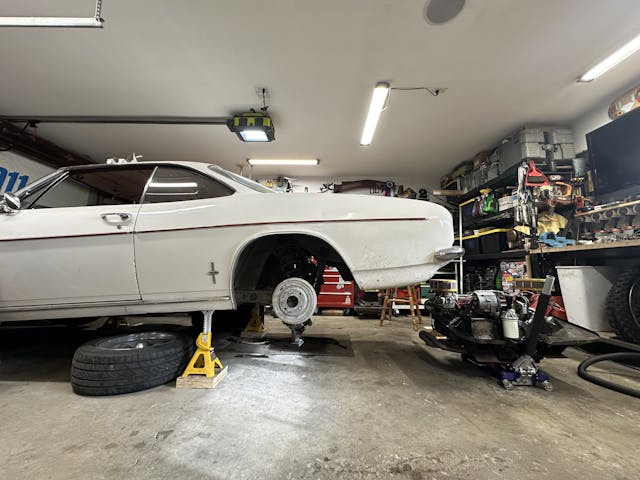
In reality, just about anything that makes you look forward to dirty hands and busted knuckles is the right project car. Expectations, however, are important; old, semi-working cars tend to behave like old, semi-working cars—they can break down and sit out of commission for extended periods. Take it from me: Spending Sunday evening underneath your car is a lot more relaxing when you don’t need the thing to get to work the next morning.
*
The whole project car process, even if it requires a long timeline, can be as rewarding as the end result. The thrill of parts finding is sometimes more thrilling than installing or even using said parts; whether buying something that requires lots of networking and parts hunting might be perfect for you, as long as you go down that road with both eyes open. Tougher endeavors in that vein hone project-car skills, but the learning curve is often steep and time-consuming. Patience is essential, so if you want more immediate gratification, relative oddball stuff like Wankel-powered NSUs or Nash Metropolitans may not be the ideal place to get your feet wet.
Find a car you think you’ll love, and the learning, fixing, and driving it all become part of the adventure. Get some experiencce under your belt and before you know it, you’ll have more than one project in the pipeline—don’t say we didn’t warn you!
***
Check out the Hagerty Media homepage so you don’t miss a single story, or better yet, bookmark it. To get our best stories delivered right to your inbox, subscribe to our newsletters.
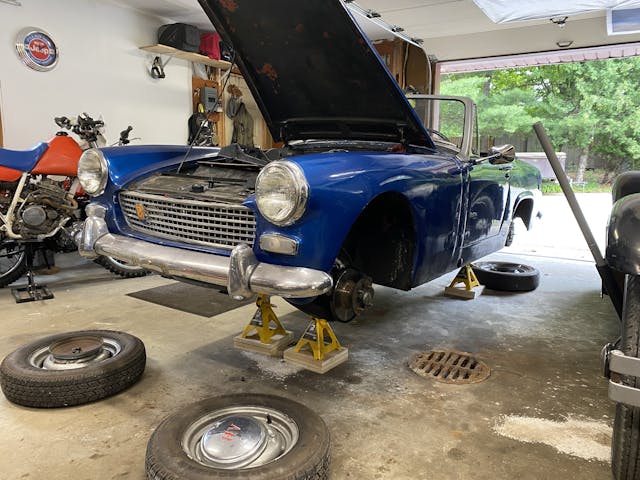


I had a Triumph TR6 and had lots of parts available through a few different suppliers. Watch out for rusted frames on any of these.
My first, for sentimental reasons, was a 1960 Thunderbird (Squarebird). “Cheap” & parts are readily available. Good times!
Having a project car is a great way to learn and enjoy the fruits of your labor. Also keep in mind that a separate garage space or building to do repairs or restoration is a must, especially in cold climate regions like mine (Ohio). And speaking of the rust belt areas, be careful not to buy a project that has terminal rust issues, which is a problem in my area. I always look for the car that has a good solid undercarriage first!
I found a 68 wildcat convertable at afarm auction in june. It’s got its quirks but It usually ran and drove. I’ve spent years doing projects on late 80’s and early 2000’s motorcycles. I knew this was going to be more fun when I was trying to fix it starting issue and it just stopped turning over. I actually kind of smiled because It would be a one of a small handful of mechanical things. The old stuff has its challenges but it’s so easy to work on. A 12-year-old with tools can work on one of these. What a great change from having to chase electronic stuff. My personal experience tells me that the closer you get to mechanical, the less stress I have.
We’ll see how well this opinion ages by mid spring.
Apparently everyone is going to have a different opinion on this topic. I have a 1969 corvette convertible. It has become a very large paper weight. After building engine, replacing wiring harnesses, I am still left with a ‘much less than reliable’ car that can’t go far without packing battery charger, starting fluid, jumper cables, etc. My advice is to make sure that whatever car you consider that it does nor become a money pit. Also be sure that you can accept your car without being perfect or like new. You should have a passion for it … but hopefully not an obsession, or it won’t be fun.
Sounds like you need more experience . Once you get them “properly sorted” a ‘vette should be pretty reliable – but even a model A Ford can be “cranky” if you miss a couple critical details – as simple as they are. Sometimes you need the help of someone who’s “been there done that” to help sort it out. Don’t be either too afraid or too proud to reach out for help. That’s one of the biggest things to remember about “the hobby”.
Completely agree with little British Sports Cars, BUT I disagree with the idea that parts are hard to find… There are several specialists that offer most everything for them. I started with a 74 Triumph Spitfire and a Haynes manual. I had taken a mechanics course my last semester at University, so felt somewhat prepared to take care of it. Then I bought a 74 MG Midget, again with help from Haynes manual. In 1989 I bought my 69 E type which is what I really wanted all along. Having been trained by the Spitfire and the Midget helped enormously with the E. After that came a 74 TR6, a 62 MGA MkII, a 67 TR4A and finally an 81 Corvette. Moss Motors, Abingdon Spares, British Parts Northwest (just Google MG Parts!! Plus Ebay) have most parts for all of them (ex. Corvette 🙂 and up until a recent disastrous fire, The Roadster Factory was a great supplier for all things TR. I have since sold off the ‘herd’ with the exception of the 69 E type, but added a 2017 F type (manual trans) for more modern entertainment. It too has its peccadilloes. Nothing beats joining one of the online car specific forums for help, guidance and advice from other like-minded aficionadas/aficionados. Also check around your local area for a car club, another great resource!
Small block C3 Corvette: Reasonably attainable, relatively simple to work on, multitude of parts options, outrageous fun to drive when running.
So many other options can be added to this list….how about a Citroën 2CV….I have learned so much tinkering with this car and parts are aplenty and very reasonable….granted it is a slow car but this is not the issue here, or is it?
Through the years I’ve had several project cars, including two VWs, a badly rusted MG Midget, and a 1968 Mustang convertible that had been stored for 25 years. The Mustang was a favorite, and even though the Diamond Blue paint was not perfect, the car was always a head-turner. Its 200ci 6-cylinder engine could never take me faster than 45 mph as it needed to be rebuilt and was beyond my skill level. Nonetheless, I kept it for three years and sold it for twice as much as I had paid for it – will worth the experience!
Crosleys. Inexpensive. Cute. Small. Available parts. Fun community. And you’ll get lots of “What kind of car is this?” for this little American car way ahead of it’s time.
Fox body Mustangs have plenty of parts and combine bits of modern and old school tech. A good combo.
As my Grandfather always said “Think twice, act once”. Do research before choosing a target car at all. Parts support, both price and availability are very important. Also – try to have a realistic view of your abilities. I love building engines, but fear and loath (thanks, HT) rust. Those two major factors will narrow the field of choice. Along a similar line, a car with one major issue could be better than one that has everything sort of bad. A little bit of rust is still rust, a lightly trashed interior is still a trashed interior, etc.
List is spot as are a lot of the comments. 60’s, 70’s and 80’s trucks are great. Parts are readily available and reasonable. I just bought a 79 F150 Free Wheeling Edition from the original owner it had been retired to his “farm” truck. It’s very original but not so nice that I’m afraid to use it. Your first project most definitely needs to be a driver. Long term first projects end up being basket cases for someone else, I’ve bought plenty.
For something completely different , how about build a Ute with a kit from Smythkitcars. take a 1999-2010 VW beetle or a 2006-2010 Dodge Charger………cut the sheet metal off the rear, install kit, bodywork, paint, Drive.A project doable in months, not years, without a huge outlay of cash. I know….I built the Dodge. Fun and unique.
One massive resource that should be considered when selecting a project car is the availability of active and historical online resources. The ability to post a question on a forum or Reddit sub and have prompt answers from others who have direct experience with the same car is extremely helpful. Likewise a wealth of forum post history where your exact question may have been asked and answered already. Paired with YouTube videos, it’s possible to avoid mistakes and resolve problems so much faster and with higher success rates than with books and static reference info alone.
My project car of choice is the first and second generation (1990-1997, 1999-2005) Mazda Miata, but there are others, including some featured in the article, for which online support exists. Being able to post a question on the Miata.net forum and have good answers from other enthusiasts, often within mere minutes and nearly always by the next day, truly adds to the enjoyment of the project car because you can maintain momentum.